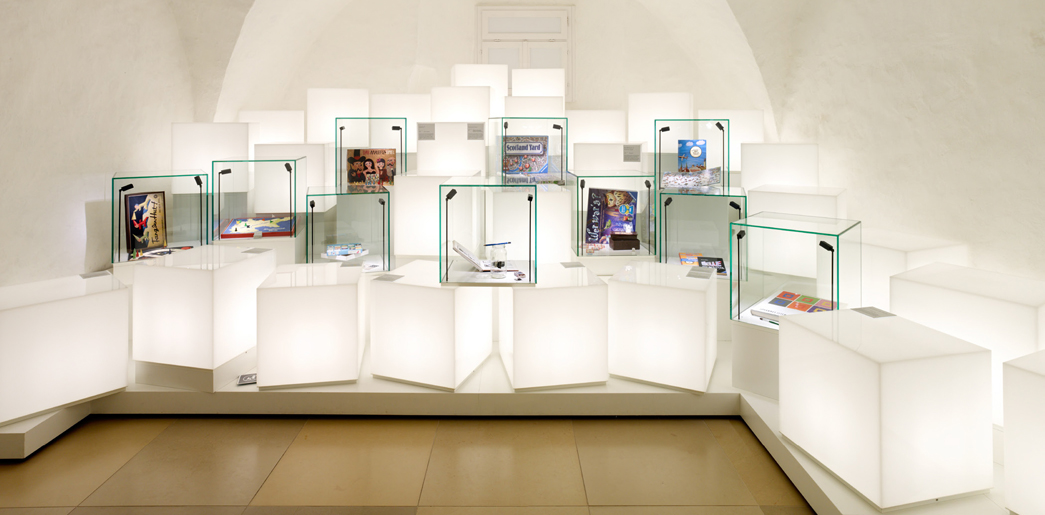This room once was the treasure chamber of the house, where precious items were stored – today, it displays the treasures of our company‘s history:
Games such as “Fang den Hut”, known as “Coppit” in English – it has been part of our product range since 1927, making it our oldest classic game. The demure Bauhaus-style design has been retained over the decades.
Or the “Deutschlandreise”, in English “Journey through Germany”, from the 1930s. The borders have changed – the principle of the game remains the same.
“Malefiz“, or “Barricade”, is the well-known dice game in which you can tease other players. The name came about when Karl Maier, second-generation head of the publishing house, played a test game with his wife. After he took all of his wife’s pieces, she playfully scolded him with the Swabian expression.: „Du bisch doch ein Malefiz!“, which roughly translates as “You’re such a baddie!”
and the game had its name.
Memory, the matching pairs game, is the most successful of Ravensburger’s games. It is played in more than 80 countries.
And with Scotland Yard, Ravensburger won the title of “Game of the Year” in 1983. Even though the legendary search for Mister X takes place in London, it was developed in Ravensburg by our own employees.
"Wer war’s”, also known as “Whoowasit?” in English, has won a lot of awards. It was one of the first games to combine the classic board game with modern electronics.
Another great game is "Funny Bunny", with all its bunnies and their wild chase to get the carrot. With worldwide sales of over 5 million, it’s one of Ravenburger’s most popular children’s games ever.
You can also see selected treasures of the Ravensburg book publishing house here.
From the search-and-find books of Ali Mitgutsch, to socio-critical youth literature like “Die Welle” - “The Wave”, to the book “Die Kunst der Farbe” - “The Elements of Colour”, which has been part of the curriculum of art schools for decades.
With more than 40 million copies sold, the books in the series "Wieso? Weshalb? Warum?”, or “Why? Why? Why?” in English, are the most successful children's non-fiction series in the German-speaking world.
The greatest treasure in the room can be seen on the wall to your left. It was the first game ever produced by Ravensburger, and dates from the year 1884: “Reise um die Erde”, based on Jules Verne's book “Around the World in 80 Days”. In the game, the days correspond to 80 squares. The only place in the world you can buy “Reise um die Erde” today is in our Museum Shop – it’s a reproduction that’s completely true to the original.



